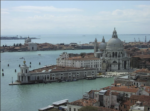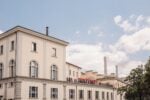Gianluca Concialdi – Moodcloth
.jpg)
Mostra di Gianluca Concialdi.
Comunicato stampa
Gianluca Concialdi
MOODCLOTH
opening reception 4-11-2014 from 6.30pm
5-11-2014 – 18-12-2104
Ermes is pleased to present Moodcloth, the first solo show of Gianluca Concialdi in Rome. the artist has realised a new body of work in sponge cloth conceived specifically for the venue of the show, which is a private apartment. The Moodcloth series is in dialogue with a selection of images from Padiglione Pompeiano, a body of work which Concialdi has been making since four years. It's a collection of self portraits of female nudes, gathered by the artist via internet tools such as Skype or email. This archive is the result of an intimate journey of Concialdi's research, through his personal relations with some of the subjects of the images in his private life or via the Internet. Padiglione Pompeiano is composed exclusively by images sent as gifts from the models to Concialdi.
MOODCLOTH
Text by Guido Santandrea
On labour
Accumulation and appropriation are terms that have established a new set of conditions within an extensive discourse on labour. I’m referring to the porous field delineated by the regime of cognitive capitalism. The transformation of industrial and artisanal modes of production into modes embedded in the immateriality of information and communication, has affected and involved the production of subjectivity into politics of economy and domination. Labour has expanded into the field of social and leisure activities, resonating with our everyday emotional and sensitive investment. It has brought on a new conception of commons and goods, with affects, knowledge and culture used as materials for production. Work and private spheres are merged by exchanges that determine the appropriation of modes of identity formation into forms of control and exploitation. This change in the establishment of value creates new forms of accumulation: materials, images and affects constitute an amalgam of possible sources. It has reconfigured a new materiality that absorbs the field of the imaginary and the affective. Circulation within this landscape defines the set of relations between sensory perceptions of the common and the constitution of identities. It means to rearrange paths of partitions, asserting a spatiality redefined by forms of mobility. An architecture is arranged where a new materiality affects the process of production and “emotional, affective and aesthetic textures and experiences that are deployed in the contemporary experience of work.1”
Self-portrait
Widespread across the ocean floors, the Posidonia oceanica is a seaweed endemic to the Mediterranean. It lives in dense meadows over the seabed or on sand-dune banks, colonizing its coasts and contributing to its ecosystem. It is common all over the Mediterranean but unique to its shores. The Posidonia doesn’t exist outside this area. Forming communities, it prevents the erosion of the costs. The terrain where it grows is called matte and is composed from the accumulation of its own rhizomes and of the sediments of the sea. Unlike a root, a rhizome does not take over a space permanently, but, driven by the need to move and to go against its own nature, it spreads in networks without a fixed centre. This agglomeration of active parts of the plant remains and the sand constitutes a dense base that allows the organism to rest in the environment and at the same time constitutes a platform for circulation. The support and the supported correspond. Movements of uprooting and regrounding are played out upon this architecture. The matte of the Posidonia enables the creation of new nomadic identities: an accumulation that establishes relations and simultaneously detaches from a place. Probably the underwater fields seen by Colapesce – the half-human, half-fish boy told of in a famous Sicilian tale – on his dives were populated by Posidonia meadows. The same landscapes were seen by the Nereids, in Ovid’s Metamorphoses, when the land and the sea were not distinct anymore and the astonished Nereids explored the land, towns, forests now flooded. “All is the sea, the sea without a shore.2”
These images and reflections arise from the work of Concialdi. The Poseidonia is a self-portrait. A series of silk screen prints on sponge cloth. Departing from a wider discourse on painting, he appropriates and hijacks production processes of (industrial) materials or goods. Drawing from an ongoing range of sensory materials – where affects, objects, actions, images are all treated as pigments – his work contemplates painting as spatial practice. He investigates the affective powers that take part in labour under the emergence of the current regime of accumulation. The subjective is subsumed by the process of making – researching the affects that circulate and resonate in a production process, a material or a colour – the work itself becomes the aesthetic process. His practice reflects on architectures like the one formed by the Poseidonia, a stratification of networks that underline the unity of the production processes.
1Jason Smith, Soul on strike, in The soul at work, Franco “Bifo” Berardi.
2Ovid, Metamorphoses.



